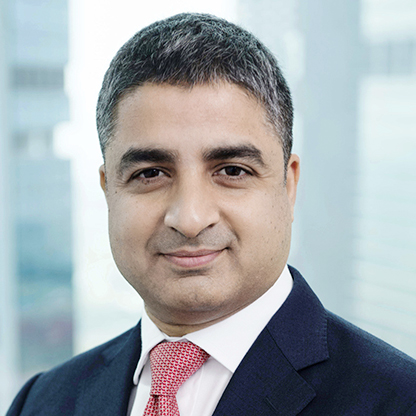The world currently faces a triple crisis: a pandemic, a climate emergency, and immediate threats to biodiversity. But instead of a strengthened sense of solidarity, there is increasing distrust among countries and within international institutions, owing to the catastrophic failure to vaccinate the world against Covid-19, the intensifying superpower rivalry between the United States and China, and the emergence of new physical and online security threats.
Nowhere is this lack of trust more worrying than in the domain of climate policy. Fortunately, it is also here that we could start rebuilding it.
Both the 2015 Paris climate agreement and the 2021 Glasgow Climate Pact fundamentally rely on peer pressure for their implementation. But this is a much weaker tool when doubt and suspicion abound. Chinese climate policymakers say that, regardless of their intentions, their efforts are dismissed for ideological reasons. And many Asian governments ask whether any US administration can make credible long-term promises given the current polarized state of American politics.
The climate trust gap is mutual. Many in Europe and North America regarded Chinese President Xi Jinping’s announcement at the United Nations in 2020 that China aims to become carbon neutral by 2060 as a smoke screen to divert attention from the country’s continued investment in coal-fired power plants. China’s refusal to make additional climate pledges in the lead-up to last November’s UN Climate Change Conference (COP26) in Glasgow was seen as further evidence of China’s true intentions.
This increasing lack of trust is not limited to climate. It is also reflected in underinvestment in other global public goods, like pandemic preparedness and response. Many have therefore compared today’s tensions to the challenges of achieving international cooperation during the Cold War. And while these analogies are often superficial and misleading, the superpower competition between the US and the Soviet Union may hold important lessons for how to establish the necessary level of trust today.
The most relevant lesson is embodied in the maxim that underpinned some of the most significant joint US-Soviet achievements. As US President Ronald Reagan put it in the context of arms-control negotiations, “Trust, but verify.” In other words, each side should trust the other, but also verify adherence to mutual commitments based on agreed criteria.
Climate change is ultimately about saving the planet, much like the desire to avoid mutual destruction that underlay Cold War arms-control efforts. We have a commonly agreed metric – greenhouse gas emissions – and a growing body of scientific evidence regarding critical levels and tipping points.
Transparency is at the core of the net-zero transition. All countries will need to be more forthcoming regarding their economy-wide emissions if they are to fulfil their stated commitments. Planning and pricing mechanisms rely on the transparency and verifiability of carbon footprints, especially when channelled through the financial system. Financial regulators and corporate boards must be able to verify information to measure firms’ progress on achieving net-zero goals.
But where to start? The surprise announcement by China and the US in Glasgow that they will cooperate to curb emissions could signal the beginning of something new and exciting. Although the joint declaration is remarkably devoid of concrete verifiable commitments, it clearly states the two countries’ ambition to work together to tackle the climate crisis.
The next step could be for the US and China to agree on meaningful verification mechanisms and when to use them. China’s promise to halt the rise in its carbon-dioxide (CO2) emissions before 2030 could be one such milestone. But the verification process requires more immediate targets. The focus should be on China’s planned transition to net zero by 2060 rather than on its 2030 emissions goal. In exchange, the US should make similar commitments along a similar timeline.
Establishing such an emissions verification process could start to rebuild trust among emerging markets and developing countries, too. Their populations are the most affected by dysfunctional global governance. They are the ones who must migrate to cities because of the impact of climate change, and who remain unvaccinated against Covid-19 because rich countries are hoarding vaccine doses. Only when US-China relations show verifiable signs of progress can we expect them to start trusting global institutions again.
Multilateral development banks can play an important role in rebuilding trust around the world. With their experience in implementing standards on the ground, these institutions can help to verify countries’ progress and to ensure that the outcome is just and inclusive, especially for vulnerable populations in emerging and developing economies. Credible verification of progress on the net-zero transition can thus help renew confidence in multilateral solutions to problems – from pandemics and climate change to money laundering and cyberattacks – that no country can address on its own.
Erik Berglöf is the chief economist of the Asian Infrastructure Investment Bank.
Copyright: Project Syndicate









